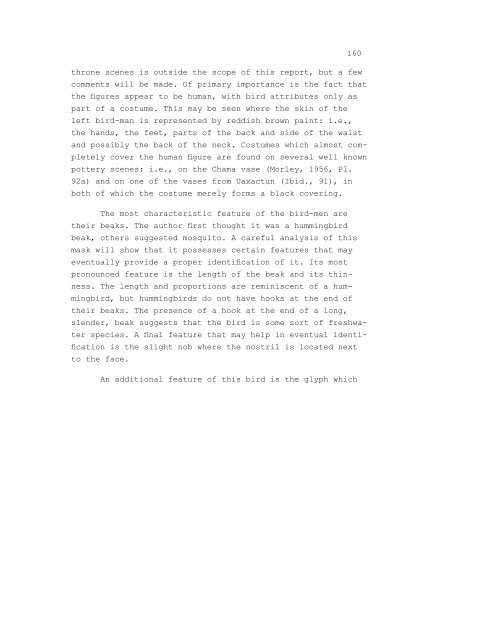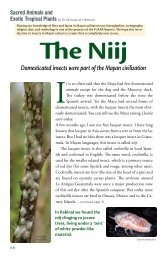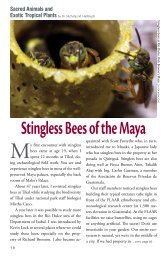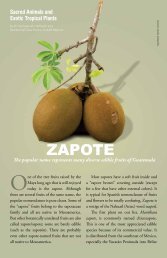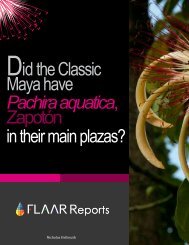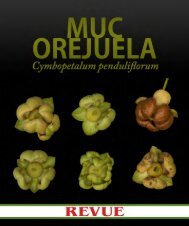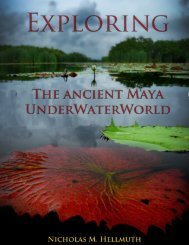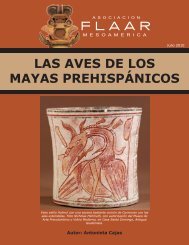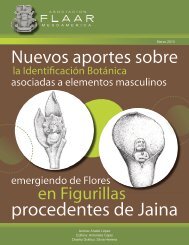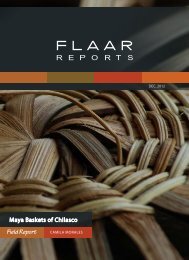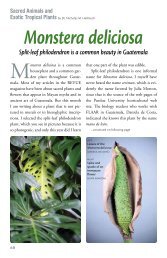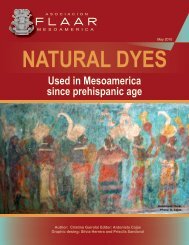Tikal Burial 196 Tomb of the Jade Jaguar - Maya Archaeology
Tikal Burial 196 Tomb of the Jade Jaguar - Maya Archaeology
Tikal Burial 196 Tomb of the Jade Jaguar - Maya Archaeology
Create successful ePaper yourself
Turn your PDF publications into a flip-book with our unique Google optimized e-Paper software.
160<br />
throne scenes is outside <strong>the</strong> scope <strong>of</strong> this report, but a few<br />
comments will be made. Of primary importance is <strong>the</strong> fact that<br />
<strong>the</strong> figures appear to be human, with bird attributes only as<br />
part <strong>of</strong> a costume. This may be seen where <strong>the</strong> skin <strong>of</strong> <strong>the</strong><br />
left bird-man is represented by reddish brown paint: i.e.,<br />
<strong>the</strong> hands, <strong>the</strong> feet, parts <strong>of</strong> <strong>the</strong> back and side <strong>of</strong> <strong>the</strong> waist<br />
and possibly <strong>the</strong> back <strong>of</strong> <strong>the</strong> neck. Costumes which almost completely<br />
cover <strong>the</strong> human figure are found on several well known<br />
pottery scenes: i.e., on <strong>the</strong> Chama vase (Morley, 1956, Pl.<br />
92a) and on one <strong>of</strong> <strong>the</strong> vases from Uaxactun (Ibid., 91), in<br />
both <strong>of</strong> which <strong>the</strong> costume merely forms a black covering.<br />
The most characteristic feature <strong>of</strong> <strong>the</strong> bird-men are<br />
<strong>the</strong>ir beaks. The author first thought it was a hummingbird<br />
beak, o<strong>the</strong>rs suggested mosquito. A careful analysis <strong>of</strong> this<br />
mask will show that it possesses certain features that may<br />
eventually provide a proper identification <strong>of</strong> it. Its most<br />
pronounced feature is <strong>the</strong> length <strong>of</strong> <strong>the</strong> beak and its thinness.<br />
The length and proportions are reminiscent <strong>of</strong> a hummingbird,<br />
but hummingbirds do not have hooks at <strong>the</strong> end <strong>of</strong><br />
<strong>the</strong>ir beaks. The presence <strong>of</strong> a hook at <strong>the</strong> end <strong>of</strong> a long,<br />
slender, beak suggests that <strong>the</strong> bird is some sort <strong>of</strong> freshwater<br />
species. A final feature that may help in eventual identification<br />
is <strong>the</strong> slight nob where <strong>the</strong> nostril is located next<br />
to <strong>the</strong> face.<br />
An additional feature <strong>of</strong> this bird is <strong>the</strong> glyph which


